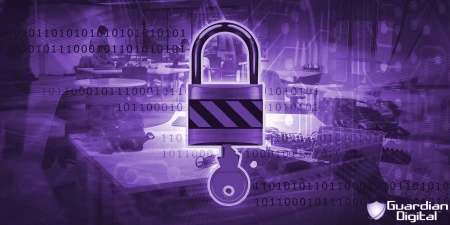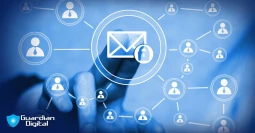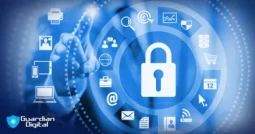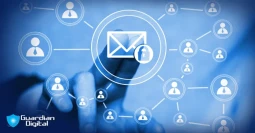The Science of Email Delivery: Beyond the Send Button

TThe moment you click on the ‘send’ button of an email, a complex framework of protocols along with a string of security measures kicks in, in order to ensure your email reaches its destination. Even though email seems instantaneous, there is a complex web of processes, including security procedures, novel checks, and encryption techniques, that are put in place to safeguard communications, which are fundamental to making the whole exchange smooth and secure.
Understanding how systems work aids in improving management and the capability of emails and provides additional layers of protection from cyber insecurity. It also helps technical people help you understand any issues you may be having more quickly. This article uncovers everything about the science and technology behind email delivery systems, focusing on conveying the most relevant aspects on which the constructed paradigm of email modern communications is based.
The Backbone of Email: Key Protocols & Technologies
Email is highly dependent on a defined set of protocols, just like anything else in the network, it is not magical. Such protocols are defined by how a message is sent and received, as well as where it could be stored. The following are the identified protocols:
The Mailman of the Internet: SMTP
Think of SMTP as the postal service for emails. It ensures that emails leave your email client and are directed to the recipient’s mail server. However, SMTP alone doesn’t guarantee secure delivery—that’s where encryption and web application security come in.
The Internet’s Address Book: DNS
When you send an email, DNS translates the recipient’s domain (e.g., example.com) into an IP address, ensuring that your message reaches the correct server. Without DNS, emails would be lost in cyberspace.
The Traffic Controller: MX Record
The MX record tells your email where to go. It defines which mail server should handle incoming emails for a specific domain. A misconfigured MX record can lead to undelivered emails or security vulnerabilities.
The Old-School Download Method: POP
POP3 is like an old-fashioned mailbox—you download your emails to your device, and they disappear from the server. This method is great for those who prefer offline access but lacks synchronization across multiple devices.
The Cloud-Based Organizer: IMAP
Unlike POP, IMAP keeps emails stored on the server, allowing users to access messages from multiple devices. It’s ideal for today’s connected world, where checking emails on your phone, laptop, and tablet is the norm.
Locking Down Email Access: IMAPS & SPOP3
Security upgrades to IMAP and POP3, known as IMAPS and SPOP3, encrypt the connection between your device and the email server, reducing the risk of hackers intercepting your messages.
Email Security and Encryption: How To Protect The Message Content on Emails
Security protocols enforce encryption during transmission to prevent emails from being intercepted or altered. Without these protections, emails can be exposed to cyber threats. The following protocols—MTA-STS, TLS, and SMTPS—play an important role in securing email communication. OWASP Top 10 and Email Security.
To mitigate security risks, organizations should follow best practices outlined in the OWASP Top 10, which highlight the most critical web security vulnerabilities, including email-based threats.
Telecommunication Systems Migrations: Email System Classifier Control Security Policy
In our modern world, due to security issues such as hacking and phishing, email protection must be of the utmost importance. Emails can be breached while being sent, and encryption ensures that this is within the realm of possibility. Understanding OWASP vulnerabilities allows organizations to identify and mitigate common email security risks.
MTA-STS
MTA-STS stands for Mail Transfer Agent Strict Transport Security. It is a security standard that helps prevent email spoofing and man-in-the-middle attacks by ensuring that emails are only sent over encrypted TLS (Transport Layer Security) connections. This is like a security guard for email servers, ensuring emails are forcefully encrypted during transmission. Without this security protocol, emails can be intercepted by threat actors and cybercriminals.
TLS
The Digital Envelope is a protocol that provides secure transmission of electronic messages by encrypting them while in transit. However, it doesn't stand alone; it works with SMTP, IMAP, and POP3 mails to ensure that the information is protected while being transferred.
Submission & SMTPS: Authentication in Encryption
These secure versions of Submission SMTP provide confidentiality and greater control over email submission. They make it difficult for impersonators to hijack messages or forge identities, preventing spoofing calls and other cyber threats.
Application Security Vulnerabilities and Email Protection
Email systems often suffer from application security vulnerabilities that can be exploited by cybercriminals. By implementing strong authentication protocols and monitoring for unauthorized access, organizations can reduce risks associated with unsecured email infrastructure.
Email Failures & Authentication: Why Emails Get Lost & How to Fix It
Even with the best systems in place, emails sometimes fail to reach their intended recipients. Understanding why they can help improve email reliability.
The Failure Notification: NDR
Have you ever received an “undeliverable email” message? That is an NDR (Non-Delivery Report). It provides a detailed reason why an email didn’t go through, whether it’s a full inbox, a mistyped email address, or a blocked domain.
The Forwarding Fixer: SRS
When an email is forwarded, SRS (Sender Rewriting Scheme) helps maintain its authenticity, ensuring it doesn’t get rejected due to strict security policies like SPF (Sender Policy Framework). Without SRS, forwarded emails might be flagged as suspicious and discarded.
Preserving Trust in Email Forwarding: ARC
ARC (Authenticated Received Chain) helps email services maintain authentication results when emails are forwarded. Without it, legitimate emails could be misidentified as fraudulent and rejected, disrupting business communication.
Conclusion & Best Practices
Email remains one of the most critical communication tools in the modern world, but it’s also a common target for cyber threats. By understanding how email protocols work and adopting best practices, businesses and individuals can improve both efficiency and security. Here’s what you can do:
By staying informed and proactive, you can ensure that every email you send reaches its destination safely and efficiently.
Other FAQs
- What Is Guardian Digital EnGarde Cloud Email Security?
- FAQs: What Are Some Examples of Malicious Code?
- How to Properly Scan Your Windows Computer for Malware & Remove Malware from Your PC
- FAQs: What Are Denial of Service (DoS) Attacks?
- FAQs: Why Outsource Businesses Email Security?
- What Is Domain Spoofing?
- What Are Insider Threats & How Can You Reduce Your Risk?
- The Silent Assassins: How Impersonation Attacks Target CEOs via Email
- How Can I Choose the Right Email Security Service for My Organization?
- What Are the Benefits of Managed Security Services Providers (MSSPs)?



